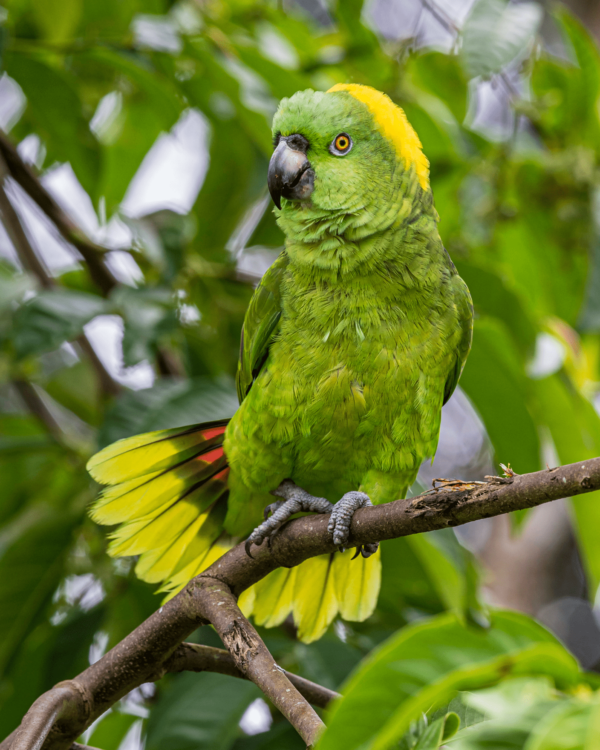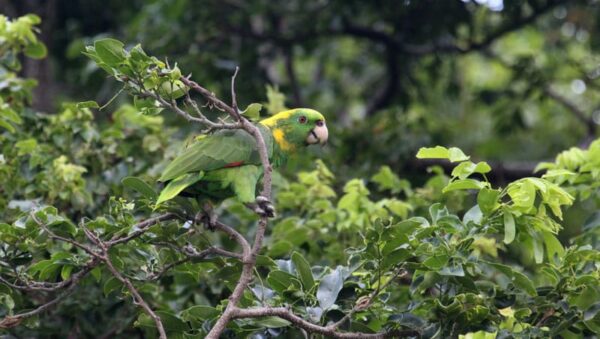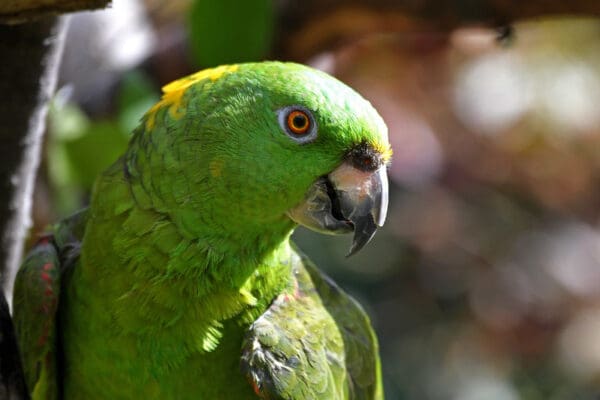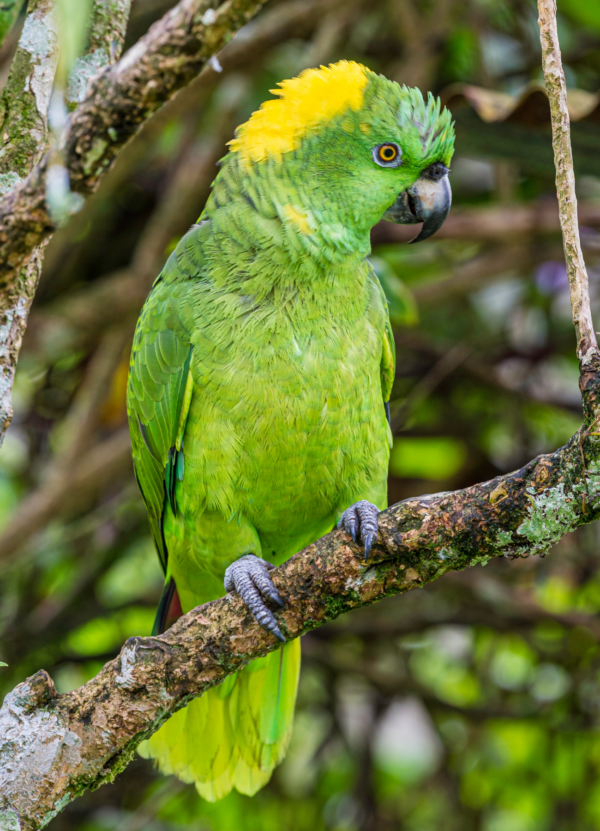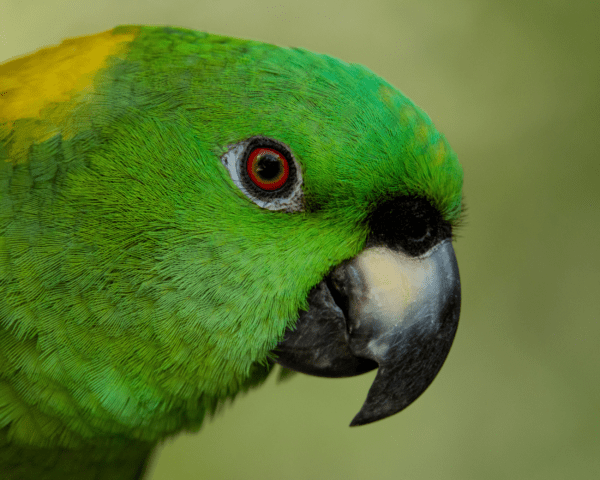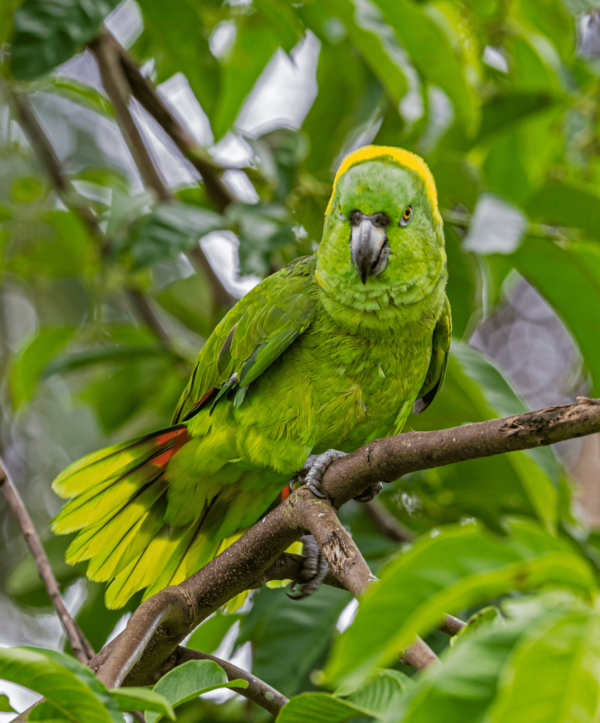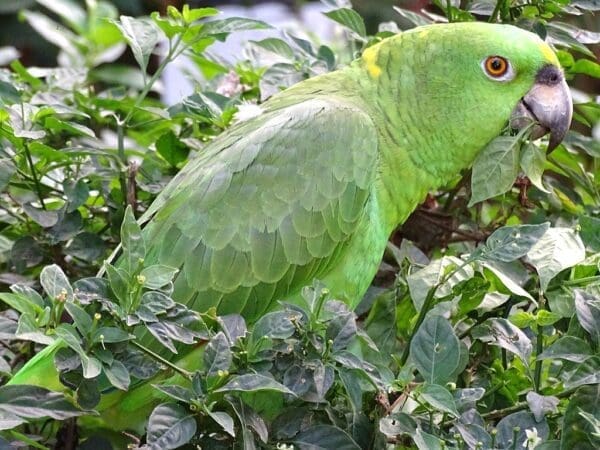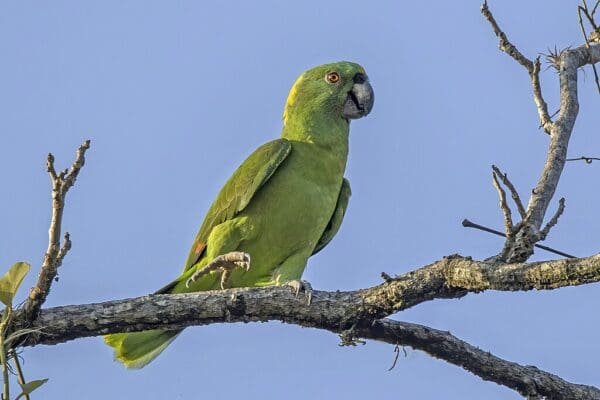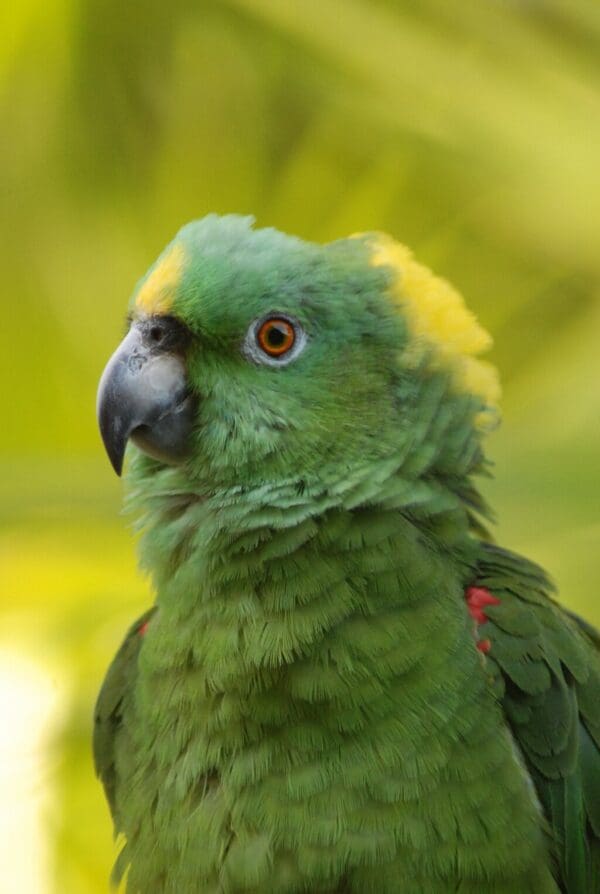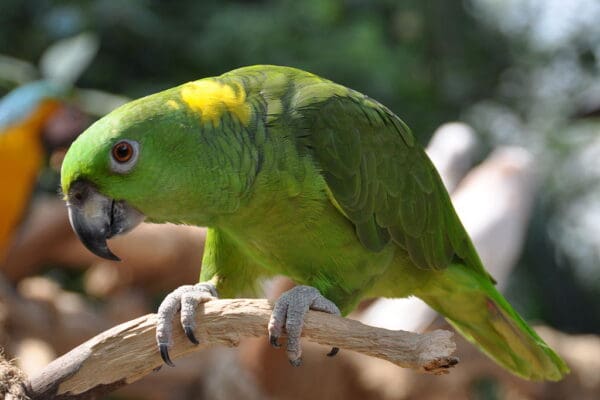Yellow-naped Amazon
Also known as:
Golden-naped Amazon, Honduras Yellow-naped Amazon (A.a. parvipes)
Also known as:
Golden-naped Amazon, Honduras Yellow-naped Amazon (A.a. parvipes)
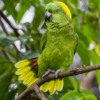
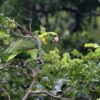

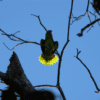
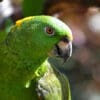
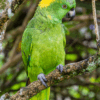
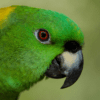
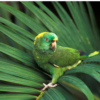
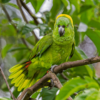
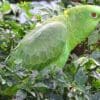
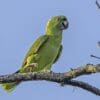
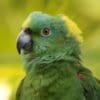
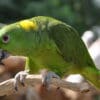
DID YOU KNOW?
Wild Yellow-naped Amazon populations have undergone a significant decline due to poaching.

Amazona

auropalliata
Size:
35 cm (14 in)
Weight:
480-550 g (17-19.5 oz)
Subspecies including nominate:
three: A.a. auropalliata, A.a. parvipes, A.a. caribaea
Colour Adult:
A. a. auropalliata: Both adults green forehead and crown to area around eyes; yellow patch on lower nape to hindneck that varies with the individual; red on bend of wing absent; yellow on thighs absent. Beak dark grey with pale grey on sides of upper mandible. Eye ring narrow and grey.
A.a. parvipes: Both adults as in auropalliata but yellow on nape more extensive; occasional other yellow markings on forehead; red on bend of wing. Beak pale grey with dark grey markings.
A.a. carbaea: Both adults as in parvipes but more olive/green to underparts; paler in general; grey/horn coloured lower mandible.
Colour Juvenile:
Immatures have no yellow on head or neck; crown washed with blue/green. Bill dark grey. Eye brown.
Call:
Wide variety of squawks, whistles and screams. Also a deep rolling karrow, karr ow.
More Information:
Content Sources:
CITES
BirdLife International
Cornell Lab of Ornithology/Birds of the World
Parrots of the World, Forshaw, 2010.
Parrots: Status Survey and Conservation Plan 2000-2004, Snyder, McGowan, Gilardi and Grajal, 2000.
Parrots in Aviculture, Low, 1992.
Lexicon of Parrots, Thomas Arndt.
Psittacine Aviculture, Schubot, Clubb and Clubb, 1992.
Avian Pediatric Seminar Proceedings, various authors, 1988.
Captive Status:
Fairly common.
Longevity:
40-60 yrs
Housing:
Aviary or suspended cage, minimum length 3 m (9.8 ft).
Diet:
Fruit such as: apple, pear, orange, cactus fruits, pomegranate, banana, forming about 30 percent of diet; fresh vegetables such as: carrot, celery, green peas, beans, fresh corn and green leaves. Cooked/sprouted beans or pulses. Spray millet, mix of small seeds, limited sunflower; complete kibble.
Enrichment:
Bathing using overhead misters or shallow water bowls; foot toys, destructible (non-toxic) wood block or vegetable tanned leather toys, non-destructible (non-toxic plastic) toys, food-finder toys, preening toys, different texture and size hanging perch toys; fir, pine, willow or elder branches, push-and-pull toys (sliding up and down).
Nest Box Size:
12″ x 12″ x 24″ (30.5 cm x 30.5 cm x 61 cm) vertical box.
Clutch Size:
2 or 3
Fledging Age:
11 weeks
Hatch Weight:
—
Peak Weight:
—
Weaning Weight:
—
World Population:
About 2600.
IUCN Red List Status:
Critically Endangered
CITES Listing:
Appendix I
Threat Summary:
The species is threatened by habitat loss and degradation, driven primarily by the expansion of agriculture, and capture for local and international wild bird trade.
Range:
A.a. auropalliata: Pacific slope from Oaxaca, Mexico to NW Costa Rica
A.a. parvipes Mosquitia of Honduras and NE Nicaragua
A.a. caribaea Bay Islands, Honduras
Habitat:
Deciduous or evergreen forest, clearings, savanna woodland, Pinus woodlands on ridges, dense gallery woodland; less commonly in dry thorn forest, mangroves or coastal swamp forest and cultivated areas with scattered trees.
Wild Diet:
Seeds of Cochlospermum, Curatella, figs and ripening Terminalia fruits. Bay Island birds feed on pine cones.
Ecology and Behaviour:
Birds are found in pairs or flocks with larger gatherings at communal roosts and feed areas.
Clutch and Egg Size:
2 to 4 ovate eggs, 37.0 x 30.0 mm (1.4 x 1.2 in)
Breeding Season:
February-March; nest is in large tree cavity.
Related Links:
Research: Long-term monitoring of Yellow-naped Amazons in Costa Rica
Research: Range-Wide Population Assessment of the Endangered Yellow-Naped Amazon (Amazona auropalliata)
Research: Yellow-naped Amazon Amazona auropalliata populations are markedly low and rapidly declining in Costa Rica and Nicaragua
